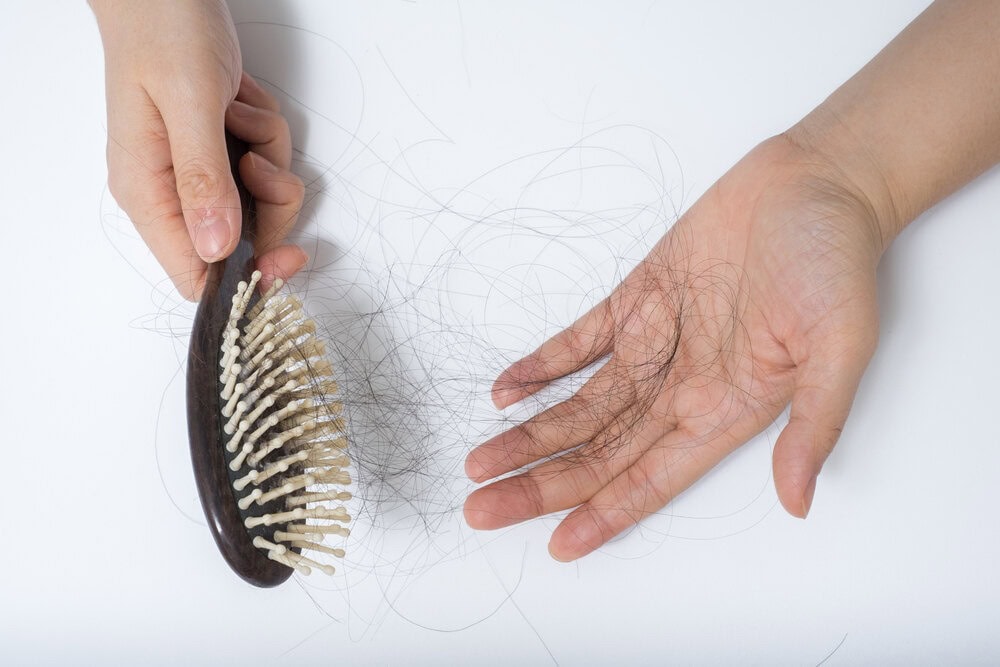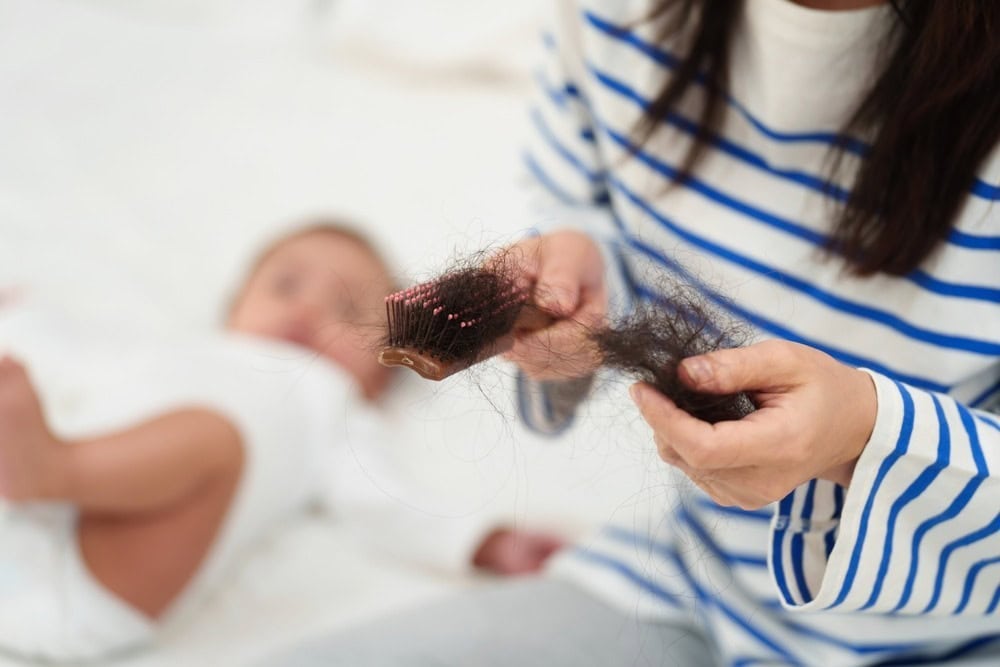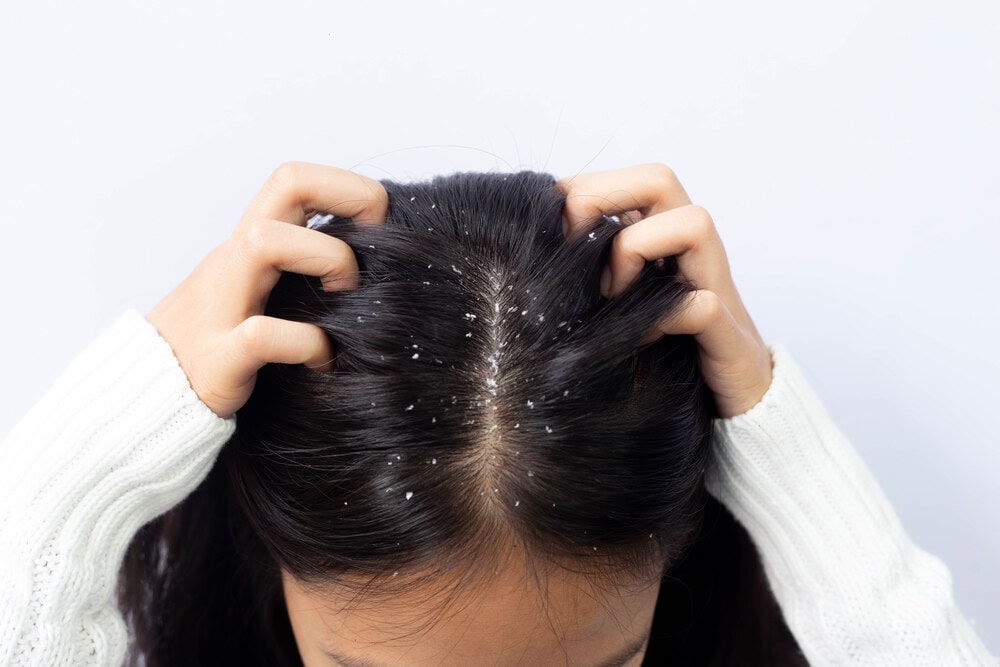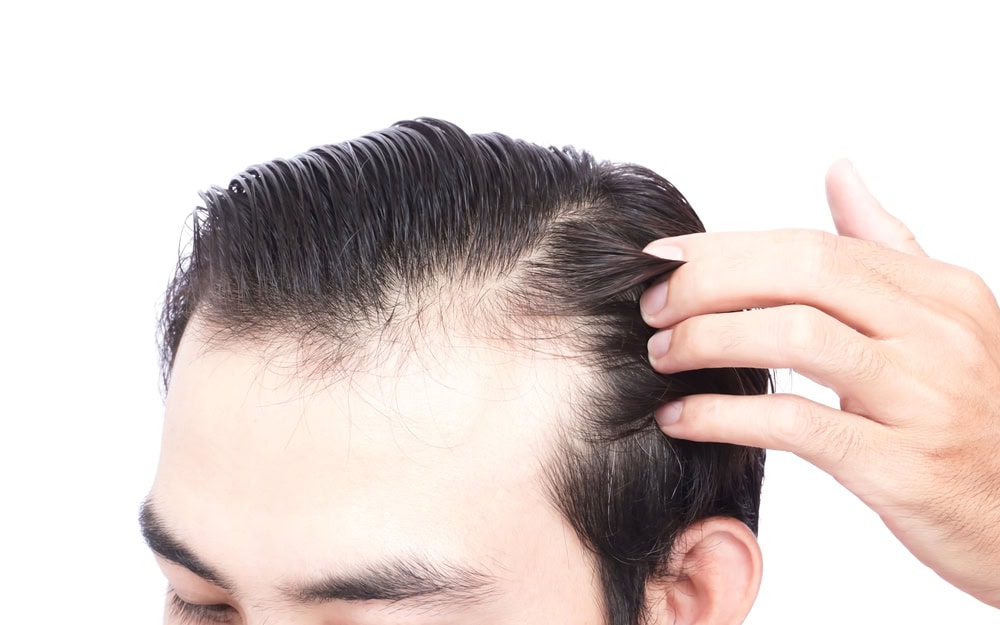Postpartum hair loss is a symptom that often occurs about 2-3 months after giving birth. When we comb our hair or gently stroke our hair and find a lot of hair falling out, new mothers may feel uneasy because they don’t know what to do.
This article invites you to understand the causes of postpartum hair loss and how to deal with it properly, as to relieve the worries of the mothers..
What causes postpartum hair loss?
Postpartum hair loss is caused by changes in the estrogen level. Symptoms occur about 2-3 months after giving birth. A new mother may lose up to 400-500 strands of hair per day. Then, after 6-12 months, the hormone levels will return to normal levels, and the hair will stop falling.
How to deal with postpartum hair loss
- Comb your hair gently and do not comb it too often.
New mothers who face hair loss should try combing the hair gently and avoid combing it too often because it may cause more hair loss. - Avoid using heat and chemicals.
When the hair is rather fragile, mothers should avoid using heat and all types of chemicals for blow drying, straightening, curling, straightening, or hair dyeing. This is because aside from stimulating hair loss, these behaviors can lead to dried, damaged, and frizzy hair. When hormones are not balanced, it is recommended that mothers blow dry their hair with cool air and refrain from styling it. - Eat a balanced diet, focusing on hair-friendly foods
Nourishing from the inside by choosing to eat nutritious foods is another way to help mothers manage postpartum hair loss. Preferable foods during this time are those beneficial to hair, such as green vegetables, eggs, fish, and meats that are rich in protein. - Keep your hair and scalp clean, and use a gentle shampoo.
Although postpartum hair loss can make mothers feel uneasy about washing their hair due to fears of losing even more hair, it is still necessary to keep your hair and scalp clean because mothers are the people closest to their babies. When washing your hair during this time, you should choose a gentle shampoo (chemical-free) and gently massage your scalp instead of roughly rubbing it. - Cut your hair shorter.
While postpartum mothers are still experiencing hair loss which ruins their confidence, another trick that might help is cutting the hair shorter, or adopt a thicker hairstyle.

What causes postpartum hair loss?
Frequently asked questions about postpartum hair loss
Is it dangerous to have a lot of postpartum hair loss?
Postpartum hair loss is not dangerous because only a small amount of hair falls out and not all postpartum mothers will experience hair loss as this condition varies between individuals.
Will the hair grow back?
Postpartum hair loss will only last for 6-12 months. After the hormone levels in the body return to normal, the hair will gradually grow back and return to the natural growth cycle.
What kind of postpartum hair loss should I see a doctor for?
Postpartum mothers who lose hair in clumps to the point of baldness in some areas, or if the symptoms do not improve within a year, it may indicate other diseases rather than postpartum hair loss. You should see a doctor for a diagnosis as soon as possible.
In addition to the good information about postpartum hair loss that we have brought to you, for those who are facing the problem of hair loss, thinning hair, baldness, you can consult Max Hair Clinic, a FUE hair transplant clinic that provides complete hair services, cared for and treated by experienced specialist doctors with world-class specialized techniques. You can receive free consultations at all Max Hair Clinic branches nationwide or contact via Line Official @maxhair
Reference:
- Hair loss after giving birth is something that mothers can fix. Accessed on 9 July 2024 https://www.paolohospital.com/th-TH/samut/Article/Details/ผมร่วงหลังคลอด-ปัญหานี้ที่คุณแม่แก้ไขได้





